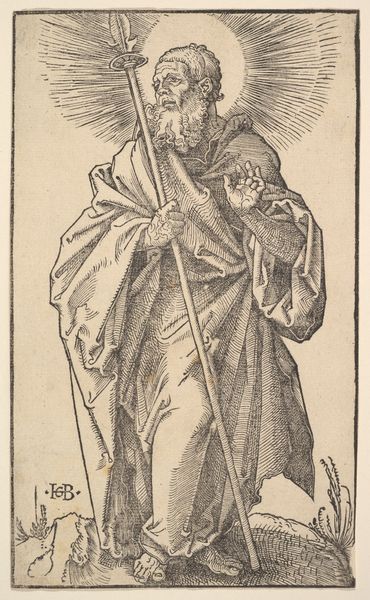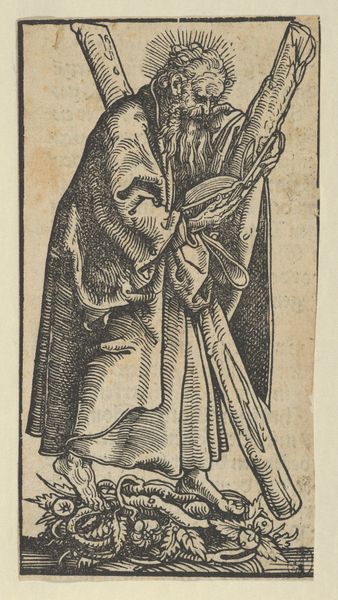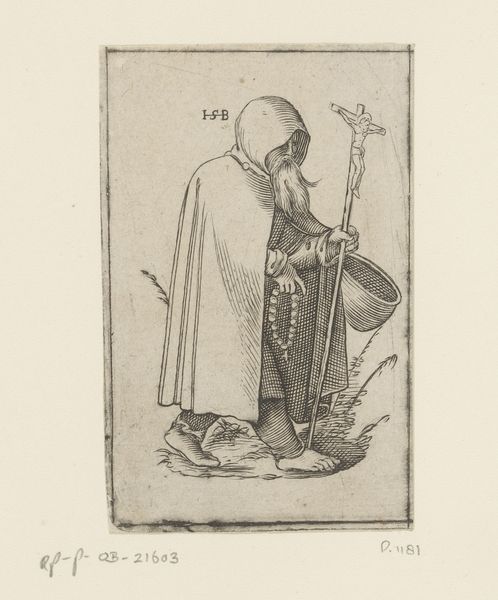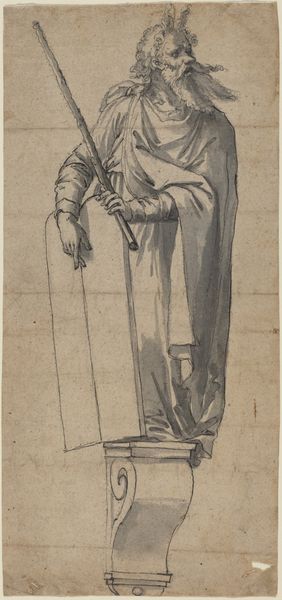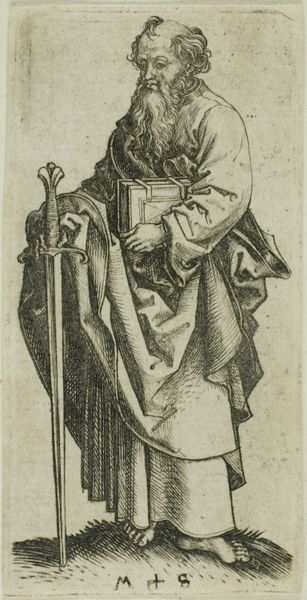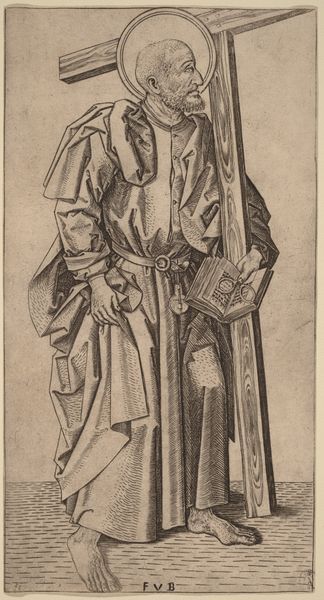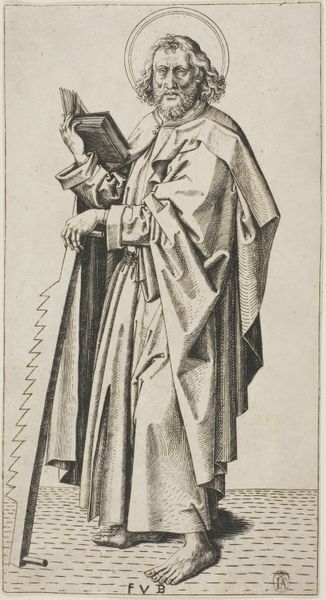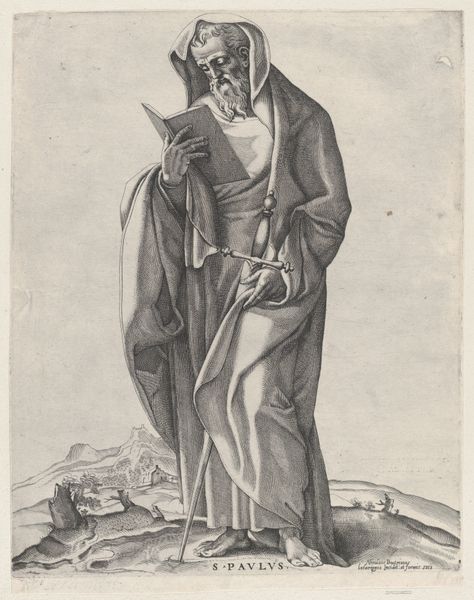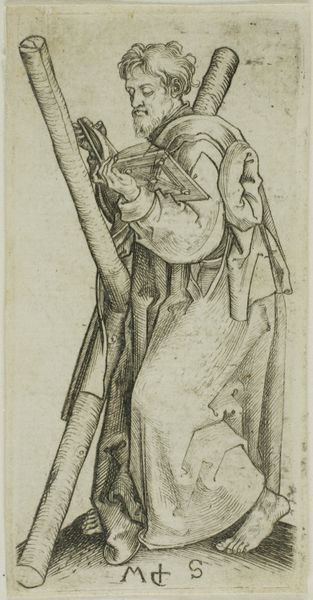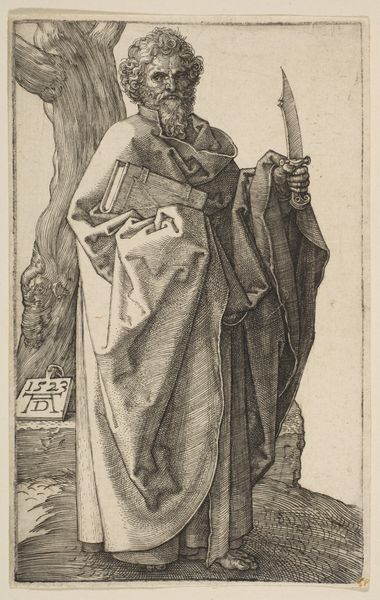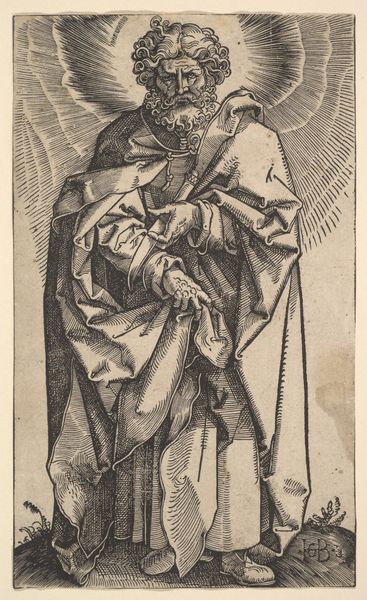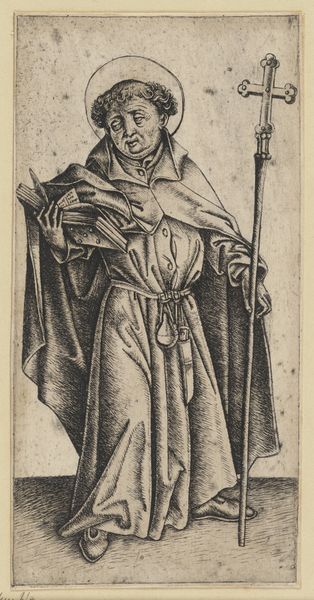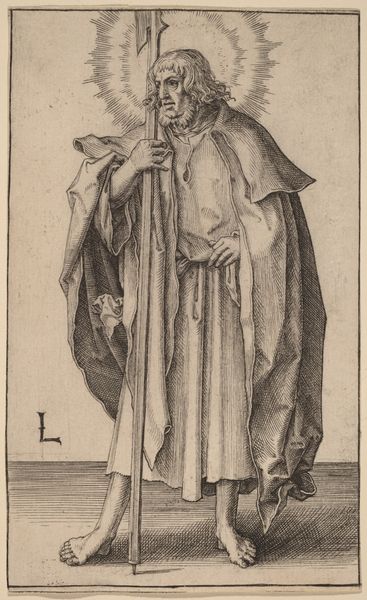
drawing, print, intaglio, engraving
#
portrait
#
drawing
#
medieval
# print
#
intaglio
#
figuration
#
12_15th-century
#
portrait drawing
#
history-painting
#
northern-renaissance
#
engraving
Copyright: Public Domain
Editor: Here we have an engraving of Saint Simon the Zealot, made around 1455-1460. He's seated, holding a cross. What strikes me is the tension between his serene expression and the weight of the cross. How do you interpret this work? Curator: That's a perceptive observation. Let's consider the socio-political context. The image of Saint Simon carrying the cross invites reflection on burden, martyrdom and zealousness for the faith during a period marked by religious upheaval and calls for reform. He looks upward as though divinely inspired, yet weighed down, so how might we interpret the meaning of such an ambiguous positionality at that particular historical moment? Editor: So, it’s not just about religious devotion, but about the pressures and complexities of faith during that era? Curator: Precisely. It provokes questions of power and subjugation, of individual versus collective identity. Notice how the artist portrays Simon’s face, the lines suggesting both determination and perhaps a hint of weariness. How does this contrast with the smooth, almost idealized halo? What contradictions are we meant to grapple with, do you think? Editor: I see what you mean. The halo is almost a symbol of idealized piety, whereas his actual facial features convey a humanity that is a little at odds with it. He embodies the humanity within these figures. Curator: Consider, too, the intaglio printmaking technique itself. It's a process of leaving one's mark, carving an image into a plate. How does that relate, conceptually, to Saint Simon’s own mark on history, his own carving out of a space within the narrative of faith? Editor: That’s fascinating; I hadn’t thought about the materiality of the artwork as also echoing the theme in that way. Thanks! Curator: And thank you. Looking at art through the lens of material culture always yields a nuanced understanding.
Comments
stadelmuseum about 2 years ago
⋮
Believers could recognize themselves in the humanness of the twelve apostles. And precisely this quality was emphasized again and again in Christian depictions, as for example in these engravings by the Master E.S.: the faces of James the Greater and Simon the Zealot (33619) display individuality and the marks of life, their clothing is simple and practical, all in all they seem approachable. At the same time, their attributes identify them as apostles and thus as especially powerful saints, and their thrones further underscore their importance.
Join the conversation
Join millions of artists and users on Artera today and experience the ultimate creative platform.
